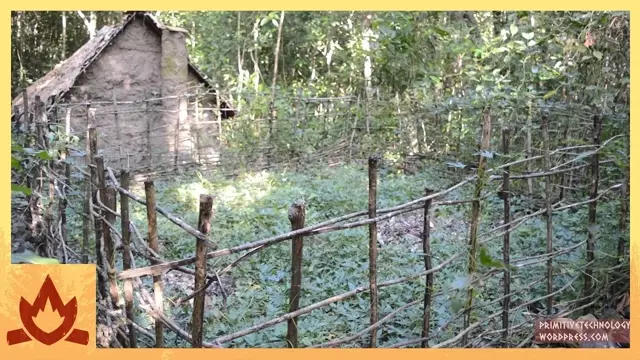2016-05-20
[public] 19.0M views, 256K likes, dislikes audio only
I built a fenced enclosure and cultivated sweet potatoes (from civilisation) and yams (from the wild) in it. I originally had a small 3X3 m garden behind the wattle and daub hut that already had some sweet potato and yam vines growing in it that were planted after the hut was built. But wallabies kept eating the leaves. So I made a wattle enclosure around it to keep them out. Wood ash was added to the soil to provide potassium and phosphorus for the growing tubers.
The previous small garden was organised in rows (not seen in this video) but this was hard to water during dry weather. So I re-organised the patch into 1 meter wide mounds with pits in the centre. Vines were planted into the mounds and water poured into the centre of each mound watered the vines. So then I had a small garden with 9 mounds contained within it. I decided to enlarge the patch to fit in more mounds so I took out 2 sides of the fence and extended them by a meter each. So the patch ended up being 4X4m and contained 16 mounds. In addition to wood ash, leaf mould was added to the mounds for fertility and to reduce loss of moisture.
The patch, being in the dark forest understory, received only about 2-3 hours of direct sunlight per day so the yield was disappointingly small. Nevertheless, the patch produced a few small sweet potatoes and a single larger yam. I also picked some green growing tips of the sweet potato vine that can also be eaten. I boiled the greens slightly in a pot with a hot stone and ate the leaves. I then roasted the sweet potatoes and yam in the coals of the fire. The sweet potatoes (purple fleshed tuber) taste sweet and starchy whereas the yam (white fleshed tuber) tastes similar to an ordinary potato. After eating, I took the wood ash from the fire and poured it back into the mounds that were harvested, replanted them and watered them. In future I’d plant the sweet potatoes in an area that receives much more sunlight in order to dramatically increase production. I’ve grown the same variety at home and it produces a much greater quantity and size of tubers in full sun. Wood ash also tends to increase tuber yield and so is a good use for waste ash.
The sweet potato is a remarkable plant. It’s a staple food of many traditional cultures. NASA has considered it a potential crop to be grown on spaceships for long term missions. In terms of energy production it’s only 3rd behind sugar cane and cassava. It produces the most food value (a combination of edible energy and nutrition) of any crop per unit space and time. A study of Fijian farms using manual labour showed that ratio of energy put into farming vs yield of energy was 1:17 for rice and 1:60 for sweet potato. It grows on marginal soil and doesn’t require much nitrogen to grow. It takes a relatively short growth period of 3-4 months to yield. All parts of the plant can be eaten including the leaves which provide additional protein and nutrients. I grow the purple variety (because it tastes better in my opinion) but all varieties are nutritious and will stave off malnutrition. A person could potentially be nearly self-sufficient from a small plot of sweet potatoes. Note that in colder climates, regular potatoes could be grown instead of sweet potatoes.
Wordpress: https://primitivetechnology.wordpress.com/
Patreon page: https://www.patreon.com/user?u=2945881&ty=h
I have no face book page. Beware of fake pages.
http://www.penguinrandomhouse.com/primitive-technology
/youtube/video/ey68uVUuyvs
/youtube/video/SLoukoBs8TE?t=288
/youtube/channel/UCAL3JXZSzSm8AlZyD3nQdBA
/youtube/video/lMZY_9QNe4I
/youtube/video/nG-rNHgFxhs
http://www.penguinrandomhouse.com/primitive-technology

